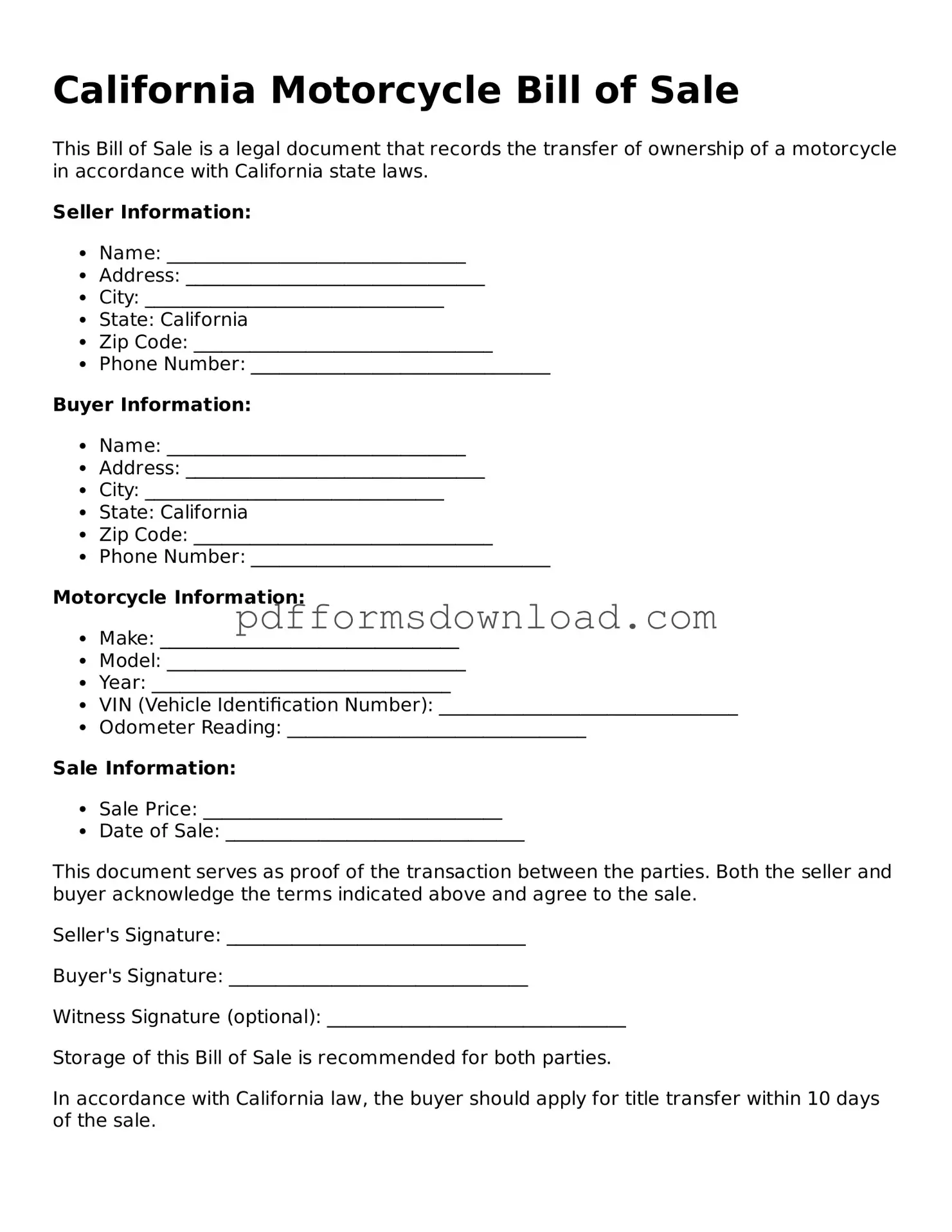What is a California Motorcycle Bill of Sale?
A California Motorcycle Bill of Sale is a legal document that records the sale of a motorcycle between a buyer and a seller. This form includes essential details such as the motorcycle's make, model, year, Vehicle Identification Number (VIN), and the sale price. It serves as proof of the transaction and can be important for both parties for future reference.
Is a Bill of Sale required in California for motorcycle sales?
While a Bill of Sale is not legally required in California for motorcycle sales, it is highly recommended. Having this document protects both the buyer and the seller by providing a clear record of the transaction. It can also simplify the registration process for the buyer.
What information should be included in the Bill of Sale?
The Bill of Sale should include the following information: the names and addresses of both the buyer and the seller, the motorcycle's make, model, year, VIN, sale price, and the date of the transaction. Additionally, it’s helpful to include any disclosures about the motorcycle's condition or any warranties provided.
Do I need to have the Bill of Sale notarized?
No, notarization is not required for a California Motorcycle Bill of Sale. However, having it notarized can add an extra layer of security and authenticity to the document, which might be beneficial in case of disputes.
Can I use a generic Bill of Sale form for a motorcycle?
Yes, you can use a generic Bill of Sale form for a motorcycle. However, ensure that the form includes all necessary details specific to motorcycles. Using a form tailored for motorcycle sales is often more effective, as it will cover all relevant aspects of the transaction.
What should I do after completing the Bill of Sale?
After completing the Bill of Sale, both the buyer and seller should keep a signed copy for their records. The buyer should also take the Bill of Sale to the Department of Motor Vehicles (DMV) when registering the motorcycle to establish ownership and complete the transfer process.
What if the motorcycle has a lien on it?
If the motorcycle has a lien, it is crucial to disclose this information in the Bill of Sale. The seller should provide proof that the lien has been satisfied or arrange for the lien to be released at the time of sale. This protects the buyer from future claims on the motorcycle.
What happens if there are issues after the sale?
If any issues arise after the sale, such as undisclosed damages or title problems, the Bill of Sale can serve as evidence in resolving disputes. It is essential to document any issues and communicate with the other party promptly. Legal advice may be necessary if a resolution cannot be reached.
